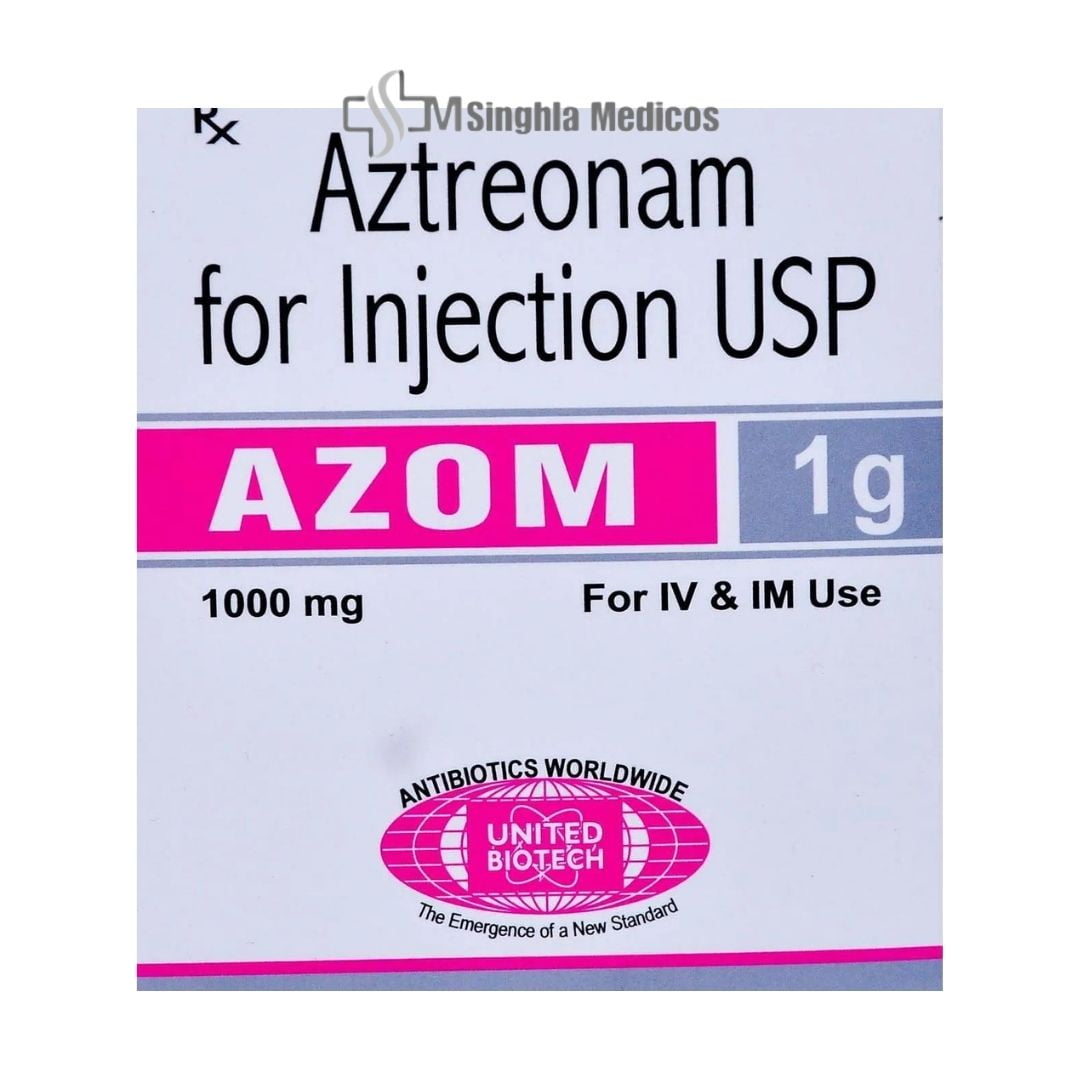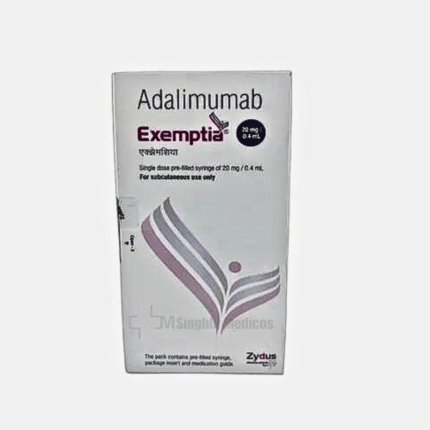

Azom 1gm Injection
₹875.00 Original price was: ₹875.00.₹787.50Current price is: ₹787.50.
![]() Prescription Required
Prescription Required
Salt : Aztreonam (1gm)
Manufacturer : United Biotech Pvt Ltd
Packing : 1 Injection in 1 vial
Product Introduction
Azom 1gm Injection, an advanced formulation in the world of antibiotics, plays a crucial role in the management and treatment of severe bacterial infections. As an intravenous medication, it contains the active ingredient azithromycin, a macrolide antibiotic known for its effectiveness against a wide range of bacteria. Azom 1gm Injection is typically reserved for use in hospital settings or under the supervision of healthcare professionals.
The mechanism through which Azom 1gm Injection operates is by halting the growth of bacteria. It achieves this by binding to the 50S ribosomal subunit of the bacteria, thereby inhibiting protein synthesis, which is essential for bacterial growth and survival. This targeted approach helps in treating infections while minimizing the risk of resistance development when used appropriately.
Uses of Azom 1gm Injection
Azom 1gm Injection is primarily utilized for treating various severe bacterial infections that are either proven or highly suspected to be caused by susceptible bacteria. The common indications for this medication include:
- Bacterial Pneumonia: Azom is effective in treating community-acquired pneumonia caused by designated, susceptible bacteria.
- Pelvic Inflammatory Disease (PID): It is used in the management of PID, often in combination with other antibiotics.
- Sexually Transmitted Infections (STIs): Azom is also employed in treating infections like Chlamydia and gonorrhea, especially in cases where other treatments might not be suitable.
- Skin and Soft Tissue Infections: Azom Injection can treat severe cases of skin and soft tissue infections, offering a robust response to such bacterial challenges.
Additionally, in some instances, it is used in more complex infections when oral administration is not possible, or when the patient needs immediate antibiotic therapy due to the severity of the infection.
Benefits of Azom 1gm Injection
The benefits of using Azom 1gm Injection are significant, particularly in a clinical setting where rapid and effective bacterial control is essential:
- Rapid Action: As an injectable formulation, Azom offers the advantage of quick absorption and immediate action, which is crucial in managing severe infections.
- Broad Spectrum: The broad-spectrum activity against a wide range of bacteria makes Azom a versatile choice in the treatment of polymicrobial infections.
- Convenience: In situations where oral administration isn’t feasible due to patient conditions like vomiting or when gastrointestinal absorption is impaired, Azom provides an effective alternative.
- Reduced Risk of Resistance: When used judiciously, Azom 1gm Injection can help mitigate the risk of antibiotic resistance, a significant concern in modern medicine.
Side Effects of Azom 1gm Injection
While Azom 1gm Injection is an effective antibiotic, it is not without potential side effects. Patients and healthcare providers should be aware of the following possible adverse effects:
- Gastrointestinal Distress: This can include symptoms like nausea, vomiting, diarrhea, and abdominal pain.
- Allergic Reactions: Although rare, some individuals may develop an allergic reaction to azithromycin. Symptoms can range from rash and itching to severe anaphylaxis.
- Liver Dysfunction: There are reports of transient liver enzyme elevations and, in rare cases, more severe liver impairment.
- Cardiac Effects: Azithromycin can affect the heart’s electrical activity, potentially leading to arrhythmias in susceptible individuals.
- Neurological Symptoms: Headaches, dizziness, and vertigo are some neurological side effects that can occur.
References
-
Petri WA Jr. Penicillins, Cephalosporins, and Other β -Lactam Antibiotics. In: Brunton LL, Chabner BA, Knollmann BC, editors. Goodman & Gilman’s: The Pharmacological Basis of Therapeutics. 12th ed. New York, New York: McGraw-Hill Medical; 2011. pp. 1500-501.
-
Chambers HF, Dech DH. Beta-Lactam Antibiotics & Other Cell Wall Synthesis Inhibitors. In: Trevor AJ, Katzung BG, Kruidering-Hall M, editors. Katzung & Trevor’s Pharmacology: Examination & Board Review. 11 th ed. McGraw-Hill Education: New York, New York; 2015. [Accessed 23 Jan. 2019] (online) Available from:

-
Briggs GG, Freeman RK, editors. A Reference Guide to Fetal and Neonatal Risk: Drugs in Pregnancy and Lactation. 10th ed. Philadelphia, PA: Wolters Kluwer Health; 2015. p. 120.
Disclaimer
Singhla Medicos primary intention is to ensure that its consumers get information that is reviewed by experts, accurate and trustworthy. The information and contents of this website are for informational purposes only. They are not intended to be a substitute for professional medical advice, diagnosis, or treatment. Please seek the advice of your doctor and discuss all your queries related to any disease or medicine. Do not disregard professional medical advice or delay in seeking it because of something you have read on Singhla Medicos. Our mission is to support, not replace, the doctor-patient relationship.
Shipping Policy
We ship across India. Note – this is subject to change as per Company Wishes. Packages will be shipped in 24 working hours. we are closed on Sundays and will reach you in the next 2-4 days post shipping. We give the estimated time of delivery on the shipping page. However, these are indicative and depend on our shipping partner.
Delivery
The delivery times are subject to location, distance, and our logistics partners. We are not liable for any delays in delivery by the courier company/postal authorities but will help you track down a package through our partner courier services.
Your purchases may reach you from various locations in more than one package. But rest assured, you will be charged one delivery fee for the entire order. As soon as your package ships, we will email you your package tracking information.
We are bound in coverage by their reach even though we use some of India’s largest logistics companies for shipping. In case your address is in a location not served by them we would contact you to find an alternative solution to make your products reach you.











Reviews
There are no reviews yet.